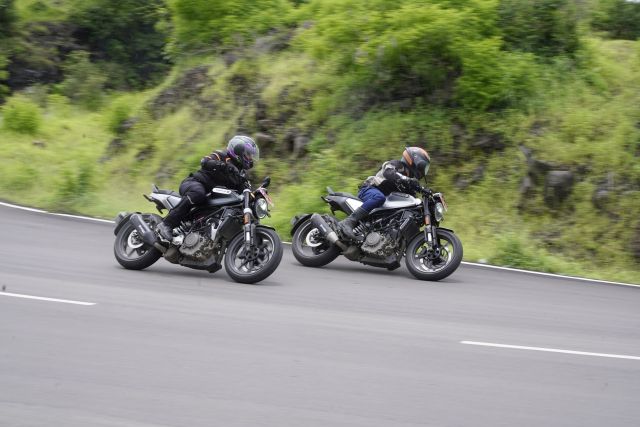
We spend some time with the latest quarter-litre motorcycles to hit our market from Swedish marque Husqvarna
Story: Anosh Khumbatta
Photography: Sanjay Raikar
Husqvarna have finally entered our market with two 250-cc offerings to add even more excitement into the growing quarter-litre market. The cafe-racer-inspired Vitpilen 250 and the scrambler-inspired Svartpilen 250 both feature the stand-out designs that modern-day Husqvarna motorcycles are known for, merging retro elements like round headlights and mirrors with futuristic bodywork, unique styling and unmistakeable contours.
Husqvarna has been owned by KTM since 2013, and both these eye-catching machines are being built alongside the orange Austrians at Bajaj’s Chakan plant, just outside Pune. The bikes are based on the 250 Duke, and share the KTM’s motor, frame and underpinnings, differentiating themselves from their orange cousin with Husqvarna’s trademark neo-retro styling.
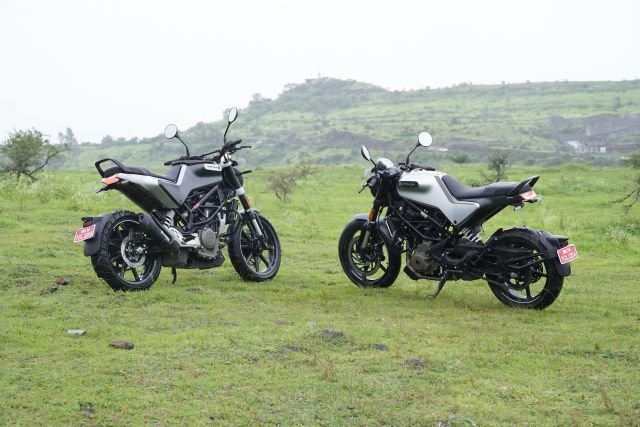
This unique styling will polarise opinions; some will love it and some will find it extremely unsightly. Looks are a matter of individual taste, and the fact of the matter is that these Huskies look like nothing else on our roads, sporting a unique design that is more straight lines and sharp angles than gentle flowing curves. Aside from the uninterrupted swathe of bodywork that runs from headstock to tail section there are no plastic panels on these bikes, with all the mechanical bits on display. Although I quite like the design, especially the retro touch from the round headlight, mirrors and single-pod meter, I did find the plastic bodywork rather flimsy. While this may have been done to reduce costs and save weight, it would have been nice if the bikes felt sturdier than they do.
Both bikes are mechanically identical, with the major difference between them coming from the riding position. While the Svartpilen 250 takes inspiration from modern-day scramblers, with a wide braced handlebar that keeps the rider comfortably upright and dual-purpose tyres, the Vitpilen 250 is Husqvarna’s take on a cafe racer, with low clip-on bars that put the rider into an aggressive crouch over the short fuel tank.
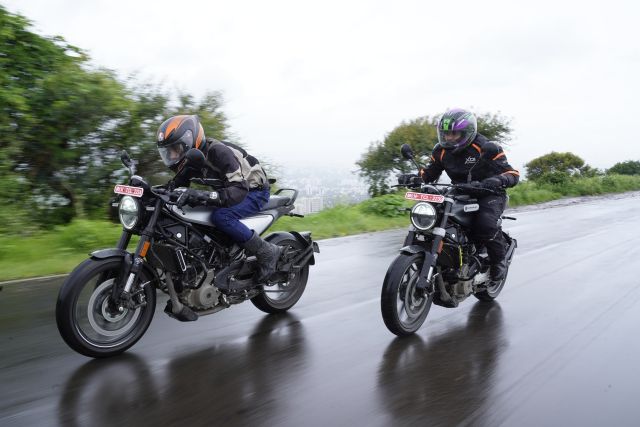
Approaching these bikes for the first time I immediately gravitate towards the more comfortable-looking Svartpilen, which is Swedish for black arrow. I swing a leg over the 835-mm-high seat and set off into Pune’s thick traffic. The bike under me feels light and nimble, changing direction with the slightest input, while the motor feels eager to spin up. The 248.8-cc liquid-cooled single has been taken directly from the 250 Duke and is in an identical state of tune, making an unchanged 30 hp at 9,000 rpm, with its 24 Nm of twist coming in at 7,250 rpm. During our performance testing we managed the 0-60 km/h dash in well under four seconds, while 100 km/h came up in nine seconds. Given a long enough straight, we expect top speed to be just upwards of 140 km/h. The motor is suspended from a trellis frame, also borrowed from the Duke, however the new rear subframe is much shorter to match the stubby Husky design language.
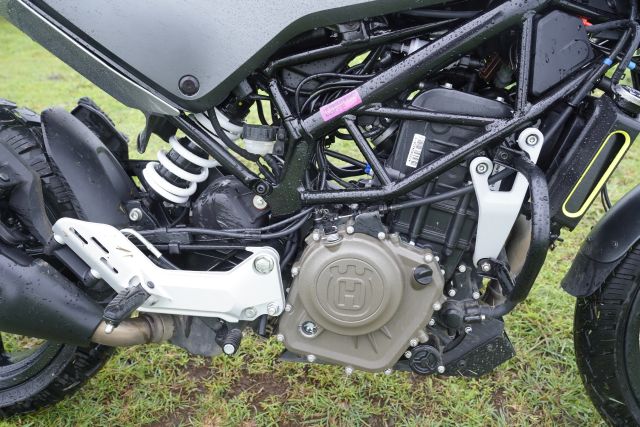
I am faced with an information-packed LCD rider interface within a round single-pod housing; it includes a bar-type tacho up top, two smaller bar-type gauges for fuel level and coolant temperature lower down and digital readouts for speed and selected gear. We also get a clock, odo and trip meters and a line of text that displays error messages, including ‘Side Stand Down’. The Svartpilen gets a luggage rack affixed above the tank, endowing this bike with a bit of practicality. You can strap a bag here if planning a longer ride, although be warned that the narrow, thinly-padded seat isn’t too comfortable over long stints.
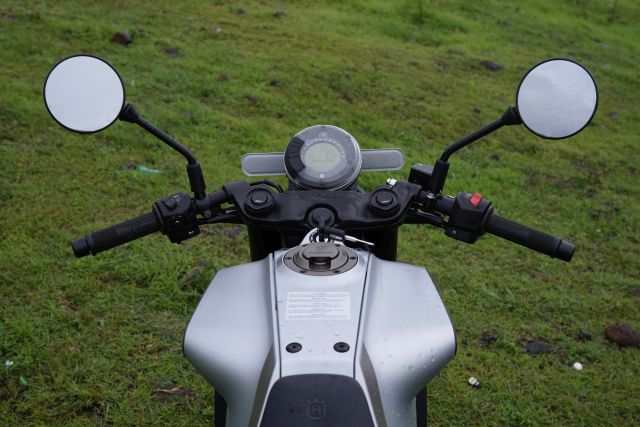
Now with the city far behind us and some twisty roads up ahead, I switched onto the sportier Vitpilen (that’s white arrow in Swedish), for some fun in the curves. With its clip-ons level with the headstock, the riding position feels extremely similar to a KTM RC, and the lack of any bodywork means that the rider can barely see any motorcycle from this forward-biased riding position. The low-set bars have me almost over the front wheel, in constant communication with the road surface, and the bike responds instantly to the slightest steering input. In fact both bikes handle extremely accurately, displaying an eagerness to tip in and holding their line well through the corners.
Suspension duties on both the Huskys are managed by a 43-mm WP Apex USD fork and a WP Apex monoshock at the rear. These units look visually similar to the fork and shock from the 250 Duke, however Husqvarna have confirmed that the fork internals have been tweaked, while suspension travel at the rear has been reduced by 8 mm to 142 mm. The Huskies however, do share the Duke’s 25-degree rake angle, which contributes to their nimble handling.
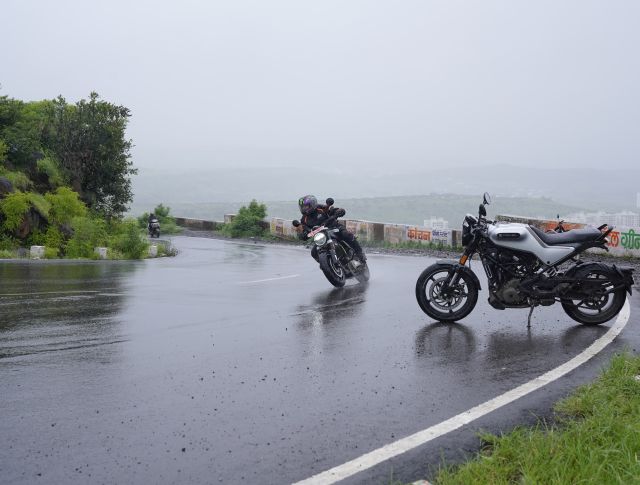
The Husqvarna twins are lightweight and fun motorcycles, ideal for today’s image-conscious young riders who wish to make a style statement around town. The bikes are small and nimble enough to make short work of city traffic, however they score low on the practicality front, especially if you hope to cover long distances on the highway. Pillion accommodation is minimal, the thinly-padded seats aren’t very comfortable over longer rides, and the small 9.5-litre fuel tank limits range between fill ups. If I were to choose one, I’d probably pick the Svartpilen for its more spacious riding position and tougher tyres that are a better fit for our roads; although if you’ve fallen for the stripped-down cafe-racer image of the Vitpilen, and are prepared to sacrifice a bit of comfort for that involving riding position, go right ahead.
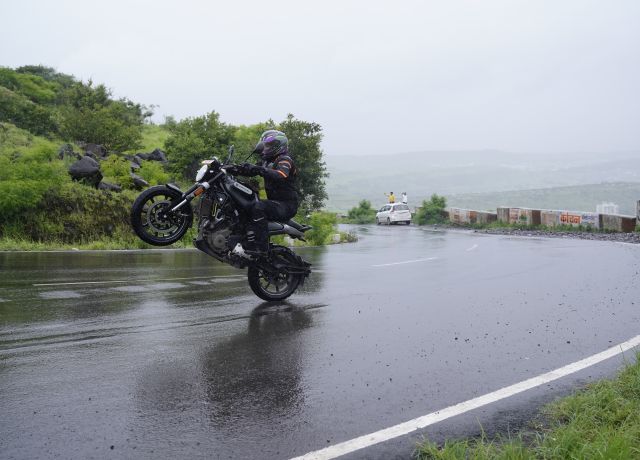
Internationally, Husqvarna motorcycles are positioned at a premium over the comparable KTM machinery, but the Huskies are priced at just under Rs 2 lakh (ex-showroom), which is about Rs 20,000 less than the 250 Duke. This aggressive pricing will definitely work to introduce the Swedish marque to a wider audience, and we’re surely going to see a lot of these uniquely-designed machines livening up our streets.


Leave a Reply